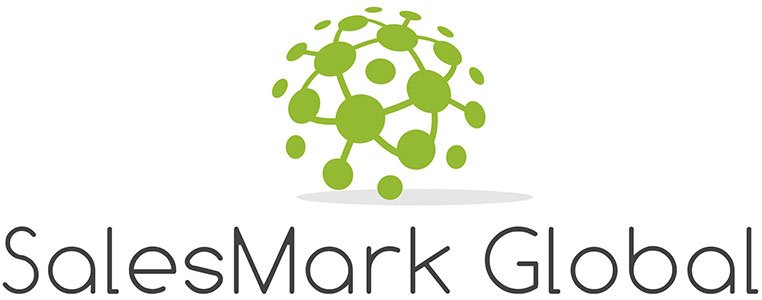Account-Based Marketing (ABM) is reshaping the process of B2B organizations identifying, targeting, and engaging high-value accounts. In contrast to a broad-based marketing, ABM is precise and campaigns are tailored to a small number of strategic prospects.
LinkedIn is the most suitable platform because of the professional situation, the presence of decision-makers, and the ability of the platform to target individuals based on data. This paper discusses the best strategies in ABM on LinkedIn, such as advanced targeting methods, personalization, engagement systems, and Sales Navigator.
Through these strategies, marketers and sales heads can maximize ROI and meaningful interactions and transform high-value accounts into long-term relationships.
Table of Contents
1. Understanding Account-Based Marketing in the LinkedIn Context
1.1. Leveraging LinkedIn Advantages for Targeted Campaigns
1.2. Aligning ABM With LinkedIn’s Relationship Ecosystem
2. Identifying and Prioritizing High-Value Accounts
2.1. Using Sales Navigator for Deep Insights
2.2. Integrating CRM and Data Enrichment Tools
3. Building a LinkedIn ABM Framework That Works
3.1. Establishing Pillars of a Successful ABM Strategy
3.2. Aligning Marketing and Sales Around Shared Goals
3.3. Mapping LinkedIn Activities to the Buyer Journey
4. Leveraging LinkedIn Sales Navigator for Precision Targeting
4.1. Targeting High-Value Contacts With Advanced Filters
4.2. Setting Up Account and Lead Lists Strategically
4.3. Integrating Navigator Insights Into Campaign Workflows
5. Crafting Hyper-Personalized Content for Target Accounts
5.1. Personalization Beyond Names and Titles
5.2. Diversifying Content Formats for Engagement
5.3. Tailoring Tone, Messaging, and Visuals
6. Using LinkedIn Ads to Reach Decision-Makers Effectively
6.1. Selecting Ad Formats for Maximum Impact
6.2. Aligning Ad Formats With Funnel Stages
6.3. Retargeting Strategies to Nurture Interest
6.4. Optimizing Through A/B Testing and Analytics
Conclusion
1. Understanding Account-Based Marketing in the LinkedIn Context
ABM is a very narrow approach whereby specific high-value accounts are targeted and not using a broad net. In comparison to volume-based traditional lead generation, ABM considers quality as it focuses the marketing campaigns on the unique needs of the accounts and their buying behavior.
This strategy is available on LinkedIn, which uses detailed professional profiles and company information to enable marketers to create campaigns that appeal to the hearts of important decision-makers.
1.1. Leveraging LinkedIn Advantages for Targeted Campaigns
LinkedIn provides unparalleled targeting on ABM, such as company-level, matched audience, and intent data insights. The characteristics enable marketers to target the appropriate stakeholders using personalized messages.
Third-party CRM data combined with platform tools allows organizations to identify decision-makers, trace engagement patterns, and provide campaigns that would seem personalized, timely, and relevant to the buying process of a specific account.
1.2. Aligning ABM With LinkedIn’s Relationship Ecosystem
ABM is successful when campaigns create trust and relationships and not only send messages. Ecosystems hosted by LinkedIn enable relationship-based marketing by sharing content in the form of InMail, groups, and network relationships.
Through the implementation of ABM tactics into the LinkedIn workforce, organizations can develop decision-makers who have valuable interactions, build a sense of credibility, and strengthen brand authority, even though they stay human in the process of the account lifecycle.
2. Identifying and Prioritizing High-Value Accounts
The high-value accounts are characterized by revenue potential, strategic significance, and chances of engagement. The segmentation of the accounts by the marketers should be carried out in terms of such criteria as the size of the company, the relevance of the industry and the buying history.
The sophisticated search and filtering features in LinkedIn have enabled teams to hone in on organizations that fit the customer profile of their ideal customers and have allowed them to invest resources in accounts that have the highest likelihood of creating long-term value.
2.1. Using Sales Navigator for Deep Insights
LinkedIn Sales Navigator provides companies with accurate account targeting through the provision of highly detailed filters based on job titles, seniority, industry, geography and firm size.
The marketers can develop account lists, monitor the activity of decision-makers and get real-time information about account activity. Such features enable teams to target the appropriate contacts, discover new opportunities, and stay active with consistent outreach depending on the account-specific dynamics.
2.2. Integrating CRM and Data Enrichment Tools
The ABM can be improved with the help of CRM platforms and data enrichment tools, which allow a centralized representation of the account interactions and past behavior.
Taking LinkedIn insights and CRM data together, teams can prioritize and identify stakeholders under the radar and cross-check the contacts. This makes campaigns focused, meaningful and engagement-optimized and offers performance-based analytics of progress and continuous enhancement.
3. Building a LinkedIn ABM Framework That Works
3.1. Establishing Pillars of a Successful ABM Strategy
An effective LinkedIn ABM framework is based on five pillars, including accurate targeting, hyper-personalization, engaging content, regular communication, and performance analysis. All these aspects support each other in that one can be sure that campaigns will reach the correct audience and the messages they convey will be heard.
The integration of these pillars will result in a unified approach that will harmonize the marketing efforts with the sales focus, establish meaningful relationships, as well as raise the chances of turning high-value accounts into loyal customers.
3.2. Aligning Marketing and Sales Around Shared Goals
ABM performance requires the alignment of marketing and sales. The teams should have common account priorities, guidelines for messaging, and engagement workflow.
The teams will have a standardized target account experience by working together on account lists, monitoring joint KPIs, and conducting outreach. Such alignment will reduce duplication, reinforce the relationship-building activities, and make sure that every touchpoint will always support the account-centric strategy.
3.3. Mapping LinkedIn Activities to the Buyer Journey
Every LinkedIn engagement must contribute to the buyer journey of a target account. Awareness campaigns familiarize the brand, engagement content informs the prospect and personalized outreach makes the conversion.
The alignment of posts, advertisements, InMails and thought leadership items to buyer phases makes communications timely and pertinent. This systematic method ensures that campaigns are most effective and that marketers foster accounts to achieve valuable business results.
4. Leveraging LinkedIn Sales Navigator for Precision Targeting
4.1. Targeting High-Value Contacts With Advanced Filters
Sales Navigator allows account and lead targeting based on the granular filters, including job function, seniority, industry and company size. This accuracy will outreach target decision-makers and influencers who have the highest chance of conversion. Marketers will be able to track updates, monitor content interaction, and prioritize their outreach activities, develop campaigns that will feel very relevant and personal, and not waste resources on unqualified contacts.
4.2. Setting Up Account and Lead Lists Strategically
Sales Navigator organizes lists where marketers can segregate by priority, industry or engagement potential. These lists will easily enable tracking of account activity, content interactions, and important updates of stakeholders. Through systematic lists, teams can provide relevant touchpoints promptly and monitor conversion ambitions as well as coordinate their outreach activities that remain data-driven.
4.3. Integrating Navigator Insights Into Campaign Workflows
Navigator Insights are real-time intelligence that gives guidance to the ABM campaign strategies. Combination with marketing automation and CRM will enable teams to activate individual messages, plan touchpoints, and follow interactions across the board. With this kind of knowledge integrated into workflows, campaigns get more responsive, focused, and productive and enhance engagement and relationships with high-value accounts during the buying cycle.
5. Crafting Hyper-Personalized Content for Target Accounts
5.1. Personalization Beyond Names and Titles
Effective ABM content does not just end with first names or job titles. It deals with the particular problems of every account, tendencies in the industry and business goals. By portraying a clear knowledge of the pain points of the prospect, marketers will be able to develop highly relevant messages that will appeal. The LinkedIn platform can give data insights, account insights, and creative storytelling, which can be scaled up and personalized to achieve the greatest impact.
5.2. Diversifying Content Formats for Engagement
LinkedIn has several types of ABM campaigns that are supported, such as InMail, carousel ads, sponsored posts and thought leadership articles. Individually, each format performs a task: InMail creates a personal approach, carousel advertisements present solutions and thought leadership creates credibility. Differentiation in the content type enables marketers to sustain the interest of the audience, meet the various learning styles, and increase the probability of contacting the key decision-makers.
5.3. Tailoring Tone, Messaging, and Visuals
Successful ABM content is tailored to each account group, in terms of tone, graphics and message. The executive stakeholders might be willing to see information-driven insights, whilst the technical leads would respond to the description of solutions. Brand professionalism should be reflected in visual assets that should therefore support key messages. Such a subtle approach will make communications relevant, compelling, and engagement-optimized, which will raise the likelihood of touching high-value accounts.
6. Using LinkedIn Ads to Reach Decision-Makers Effectively
6.1. Selecting Ad Formats for Maximum Impact
There are different types of Ads available on LinkedIn ABM: Sponsored Content, Message Ads, Conversation Ads, and Dynamic Ads. All the formats have their own purposes: The Sponsored Content is used to spread awareness of the brand, Message Ads motivate people to take direct action, and Dynamic Ads make objects visible. The correct format is used to make sure that campaigns are effectively delivered to decision-makers without losing relevancy during the buyer journey.
6.2. Aligning Ad Formats With Funnel Stages
The ad types should be similar to the buyer journey. Sponsored Posts have heavy content in their awareness-related accounts, Message or Conversation Ads at the consideration stage, and high-intent accounts are retargeted with Dynamic Ads. Such strategic alignment ensures maximum interaction, development of prospects, and fast conversion through the provision of the right message at the appropriate time to the appropriate audience.
6.3. Retargeting Strategies to Nurture Interest
Retargeting enables the ABM teams to have a second meeting with those who previously saw the content but failed to convert. Through the matched audience feature offered by LinkedIn, marketers can display specific advertisements, InMails, or carousels to regain attention. The retargeting campaigns maintain the brand at the forefront, support the important messages, and will progressively lead the prospect to conversion at a slow pace without causing overcrowding and account-targeted personalization.
6.4. Optimizing Through A/B Testing and Analytics
A/B testing will make sure LinkedIn ABM campaigns work at an optimal level. Through ad copy, image, placement, CTA and delivery time testing, marketers determine what appeals to target accounts. Campaign Manager analytics gives an idea of the engagement, click rates, and conversion rates. Such constant optimization based on information helps to keep the campaigns up-to-date, efficient, and able to deliver quantifiable business results.
Conclusion
LinkedIn ABM allows companies to precisely customize and credibly target high-value accounts. Marketing and sales should be aligned, targeted content created and using the power of new tools such as Sales Navigator, teams should turn accounts into devoted partners.
Data-based optimization makes sure that campaigns are useful in the long term. The bottom line is that LinkedIn ABM is not just a marketing strategy but a long-term decision to develop lasting relations in the enterprise that will provide quantifiable business growth and value in the long term.
Visit Our SalesMarkBlog Section to Uncover the Sales Strategies That Ignite Your Sales Journey!





